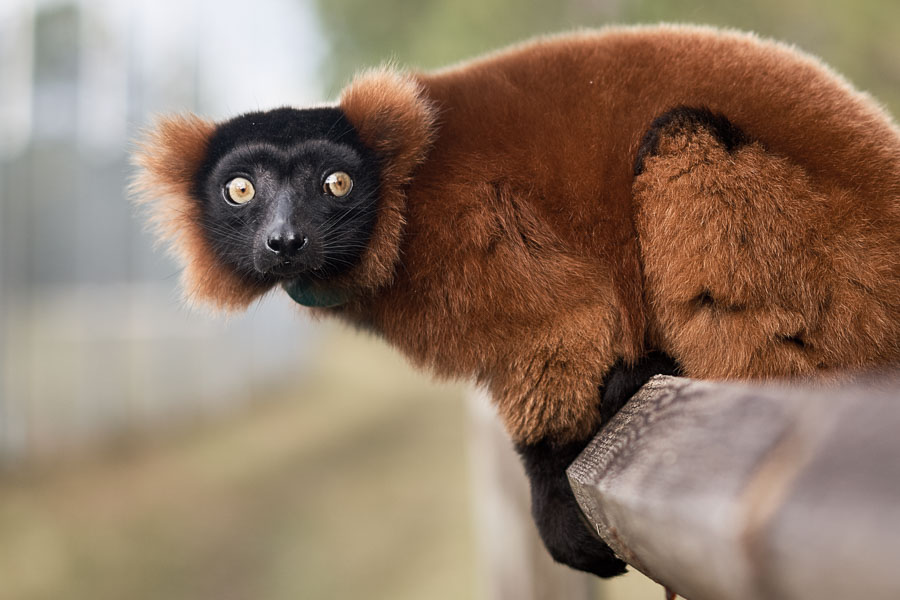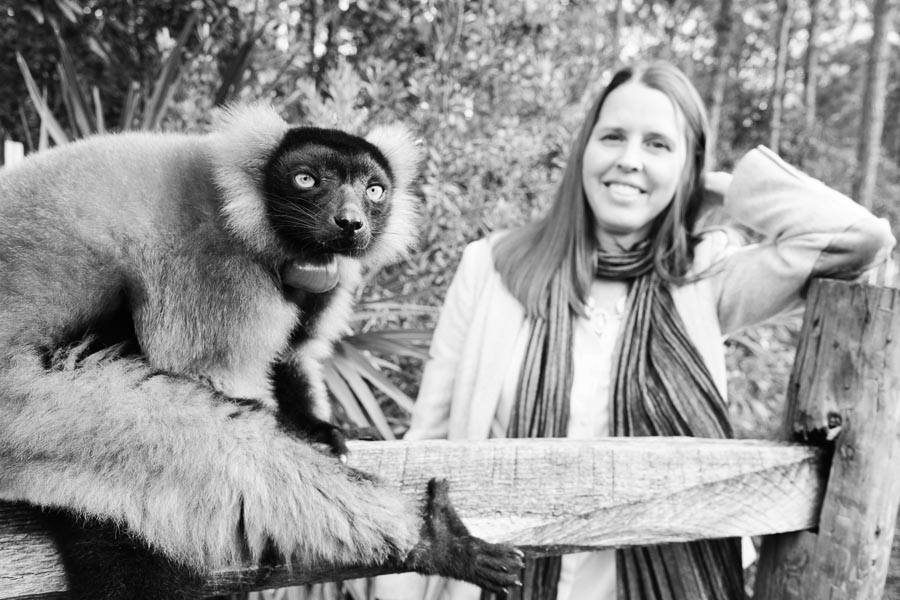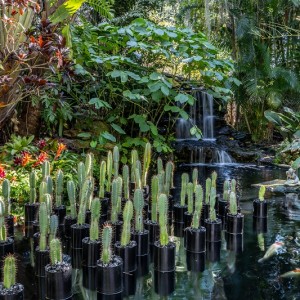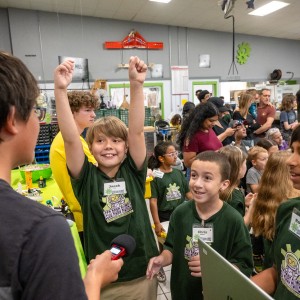Wander into the Florida wilds and one can find just about anything, including lemurs apparently. Amidst the old Florida landscape and far from the new Florida developments, out in southeastern Manatee County, the Lemur Conservation Foundation’s Myakka City Lemur Reserve plays host to more than 50 of these Madagascan transplants, who are protected there and studied by scientists and students. Fresh on the heels of the successful Leap for Lemurs capital campaign, seeing the reserve raise $2.2 million in three years and create the new Elizabeth Moore Lemur Forest Habitat, SRQ went out on a limb with Myakka City Lemur Reserve Executive Director Dr. Alison Grand to talk prosimians and their protection.

PHOTO BY WYATT KOSTYGAN. A RED-RUFFED LEMUR, CRITICALLY ENDANGERED IN ITS NATIVE MADAGASCAR, FINDS A PROTECTED HOME AT THE MYAKKA CITY LEMUR RESERVE.
SRQ: Where did the love of lemurs come from? Dr. Alison Grand Well the love of animals was definitely lifelong, lemurs came a little bit later in life. I was at a small liberal arts school, Sewanee, and I went there thinking I wanted to be a veterinarian. I took an animal behavior class and as part of that class we took a field trip to a lemur facility and did research. The following year I went back as a teaching assistant for that program and that’s where it all started. I quickly changed my major.
At that time, what struck you about the animals? They were in these big naturalistic habitats, so I was really able to see their natural behavior just like you would in the field. It was just like you were in the wild. I can remember so clearly. It was freezing cold, all bundled up, completely by myself and just very peaceful, sitting for hours watching these lemurs high up in the tree and recording everything they were doing. You just have no idea all the little intricacies of their behavior and their social life, their vocalizations.
How did the Myakka City Lemur Reserve end up in Myakka City? The primary reason for the location was because of the weather. We wanted a place that was nice and warm so that the lemurs could be out in the forest year round and we wouldn’t have to bring them in for months at a time for cold weather. Madagascar has so many different habitats. Some areas are really dry and hot, other areas are a little more mountainous and can be a little cooler and a little more humid, but the most important thing was it being warm.

PHOTO BY WYATT KOSTYGAN. DR. ALISON GRAND AND ONE OF HER PROSIMIAN CHARGES.
What are the major threats to lemurs today? The primary threat to lemurs is habitat disturbance and habitat destruction. The bottom line is we’re going to have to figure out how to accommodate both people and lemurs. One of the common agricultural practices is slash and burn agriculture, where to get the soil fertile and suitable for planting they’ll go and burn an area and then plant crops. The land, when prepared that way, is only fertile for a couple of years, so then they have to move to a new forested area, and slash and burn. And that cycle is encroaching into all of the forested areas, and that area is going to be a dead zone unless someone goes in and does reforestation.
How do Lemur Conservation Foundation and the Myakka City Reserve address these threats? We work primarily in a couple of different parks in Madagascar, Anjanaharibe-Sud Special Reserve and Marojejy National Park. We do a lot with park protection, helping with infrastructure and making sure that there are forest patrol and boundary demarcation efforts to protect these last pristine rain forests. We’re also monitoring the lemurs that are in that forest, collecting data to see how they are faring. We do a lot of work with the communities there as well. We can’t protect lemurs unless there is buy-in with the community and they care about the lemurs. We can’t expect them to protect this area unless they have everything that they need for their daily lives.
Are these education efforts? Livelihood initiatives. Some of those are developing tree nurseries so that there’s wood for charcoal production, firewood or construction materials. Some of those trees will go for reforestation efforts too, but some of those trees are for the community so that they don’t have to go into the forest to collect trees. We also have created a community fishpond to try and combat hunting of lemurs. We are very systematically and very logically looking at the drivers of the threats to lemurs.
But there is a local educational component, right? Right before the holidays, we had a professor from Eastern Kentucky University and he brought his students here for a weeklong field school. We have partnerships with several different universities—University of Miami, Florida Gulf Coast University, University of North Carolina at Charlotte, Portland State University—and they’ll bring their students here just like I did when I was an undergrad.
Are you seeing the same impact on these students, that your studies had on you? Dr. Lydia Light from UNC-Charlotte, she was actually a field school student in the University of Miami program that is run by Dr. Linda Taylor. So that made such a big impact on her that she got her PhD, became a primatologist, and now she’s running her own field school out of UNC-Charlotte, which I just think is incredible.
What is your favorite or coolest lemur fact that you’ve picked up in your studies? One of my favorite things to share with kids, that they always seem to get a big kick out of, is that ring-tailed lemurs do something called stink fighting, where they will take their tail and get some of their scent on it from their scent glands and waft it at a competitor male. And that’s an adorable way for lemurs to fight with each other. Even the way they fight is pretty cute.








